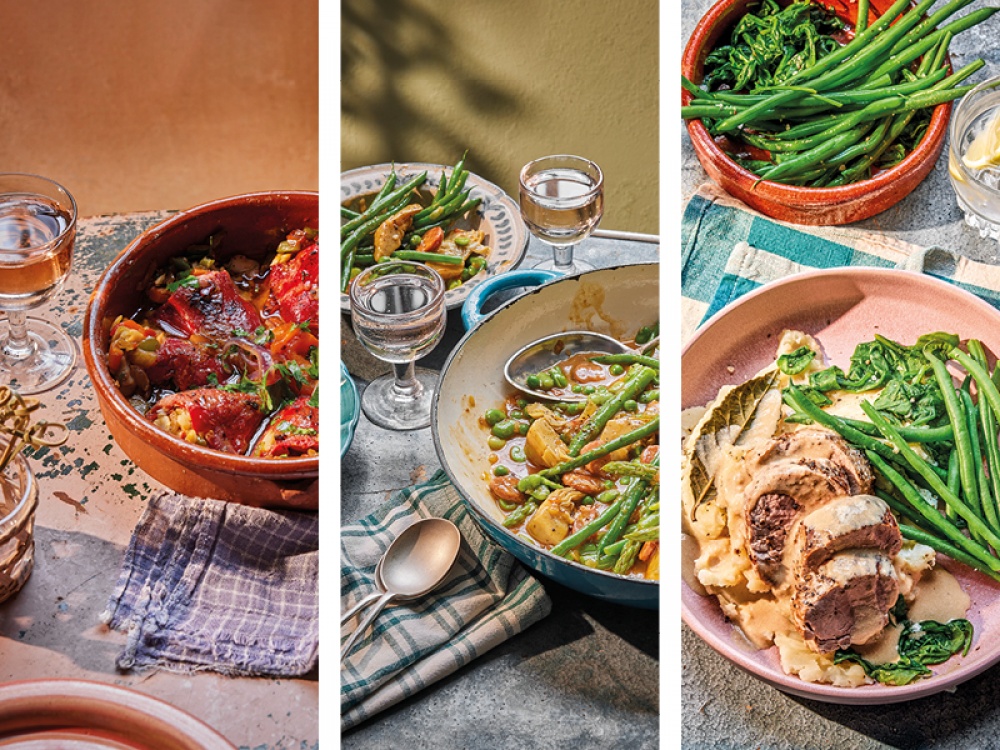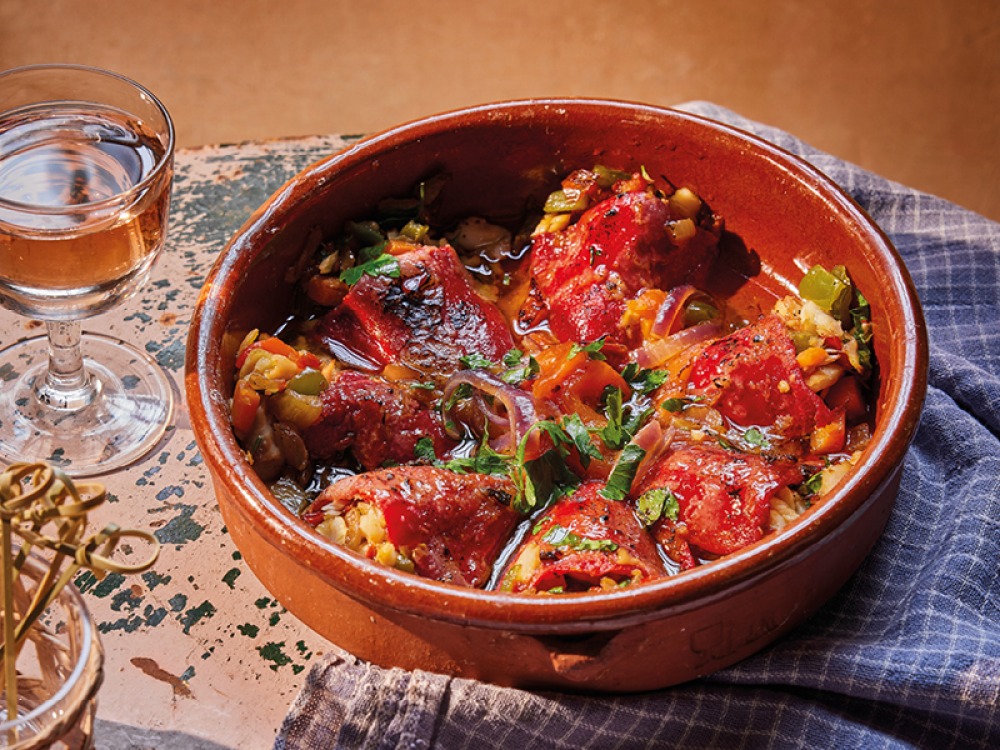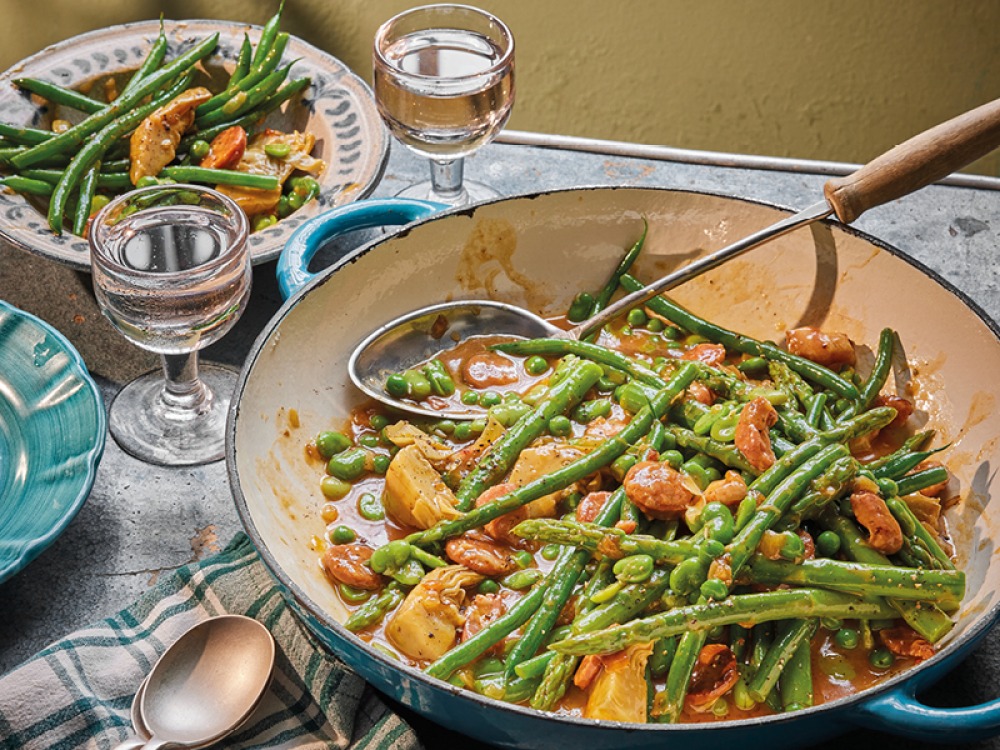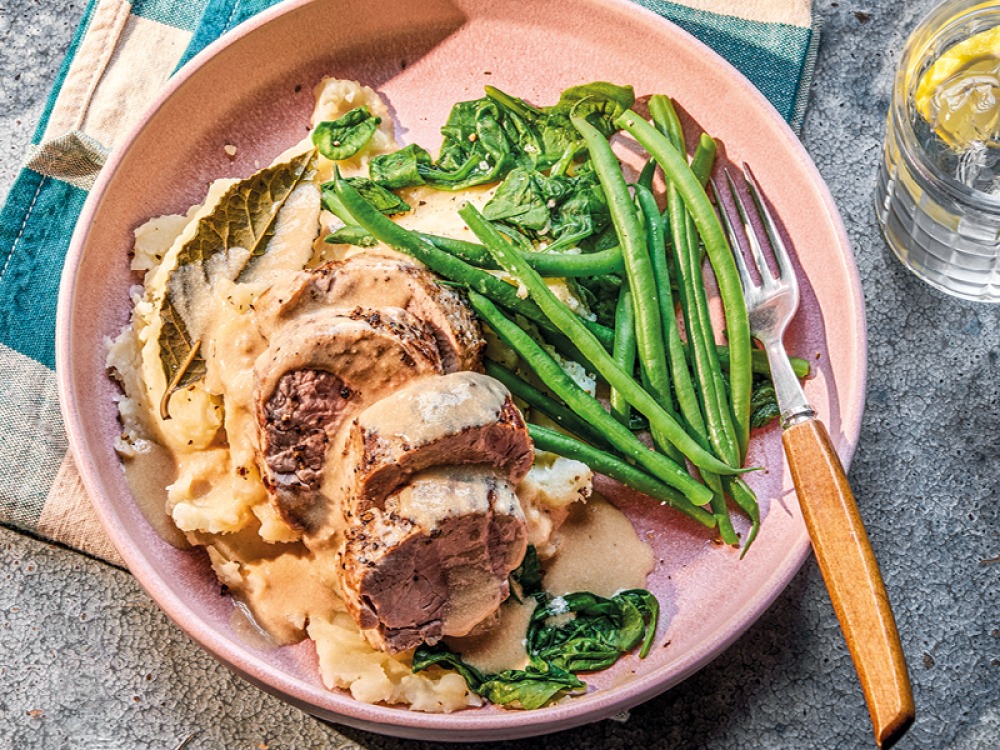
La Cocina Vasca by María José Sevilla
Published by Ryland Peters & Small (£22)
Photography by Clare Winfield © Ryland Peters & Small
Join Our World... Sign up for our exclusive newsletter.

Be inspired every day with Living North



I don’t recall eating canned pimientos del piquillo (piquillo peppers) until I was in my late teens. At that time, I was living in Madrid while their area of production was located in southern Navarra. Piquillos can be purchased fresh, but these small, vivid red, conical peppers with a distinctive flavour become a true speciality once canned or jarred. A couple of decades ago, canned piquillos inspired top Basque chefs to create recipes that were copied everywhere.
Staying once in the small medieval town of Puente la Reina, near Pamplona, I was invited to a seasonal food experience. An industrial roasting oven was set up to char thousands of peppers grown by locals in their gardens. It was impressive to hear the fire crackling as the peppers passed through on a conveyor belt, their skins charring in a matter of minutes. Collected in buckets, the peppers were then taken back to family kitchens to be peeled by hand before being preserved.
Heat half the oil in a large saucepan. Add the onion, garlic, carrot and green (bell) pepper and gently sauté. When all the vegetables are tender, add the flaked white fish and parsley. Season with salt and black pepper. Cook for a few minutes, stirring, then set aside.
Heat the remaining oil in a frying pan (adding a little extra, if needed). Using a tablespoon, stuff the canned or jarred piquillo peppers with the vegetable and fish mixture, then lightly coat each one in flour. Next, dip each pepper in the beaten egg, add to the pan and fry for a few minutes, turning just once, to take on a little colour. Once fried, transfer to a shallow saucepan or earthenware pot, making sure the peppers are not touching. Keep warm.
Meanwhile, prepare the sauce. Warm the stock. In a small saucepan, gently sauté the onion in the olive oil until tender. Add the red (bell) and piquillo peppers, stirring for a minute before adding the warmed stock and chopped parsley. Simmer for another couple of minutes and then blend using a handheld stick (immersion) blender.
Pour the sauce over the stuffed peppers in the shallow saucepan or earthenware dish. Gently heat for a few minutes before serving.

Tudela is a town in Southern Navarra renowned for the quality of the vegetables grown in the unique rich land that surrounds the town. Tudela is also associated with a dish cooked there all year around, its ingredients changing with the seasons. The dish is known as menestra. To include it in this book, I have chosen a menestra de primavera made with spring vegetables.
Spring is the time of year when hundreds of vegetable gardens, located close to the river Ebro, are uniquely vibrant with a diversity of produce that is needed to prepare a number of dishes admired all over the Basque Country. Menestra de primavera demands a selection of early vegetables, each prepared separately as they require different cooking times. This is a recipe that takes time and an understanding of each vegetable, but it is worth the effort. It is a true ode to the arrival of spring.
Although traditional cooks would cook each vegetable until very tender, too tender perhaps, I prefer to leave the asparagus, broad beans and fresh peas still with a little bite. You can easily keep this stew vegan by simply omitting the chorizo and ham
Fill five separate saucepans with salted water and bring to the boil. (This is important as each vegetable has a different cooking time.) Start adding each vegetable to their own pan and cook until tender: first, add the green beans, followed by the broad beans and artichoke hearts, then the peas and asparagus.
While the vegetables are cooking, prepare the other ingredients. Heat the oil in a frying pan. When hot, add the onion and sauté until translucent. Add the chorizo and ham, if using, and cook for a few minutes. Sprinkle in the flour and, using a wooden spoon, stir into the other ingredients until well combined and the flour loses its raw flavour. Pour in the wine and let it reduce a little while dissolving the flour. Now, add a splash of the cooking water from the asparagus pan and gently stir to slightly thin the sauce.
Drain each vegetable. Starting with the green beans, layer the vegetables in a large, shallow frying pan or heatproof dish. Follow with a layer of broad beans, then the artichoke hearts, asparagus and, finally, the peas. Pour the sauce over the vegetables, briefly shake the pan and cook for a further minute before serving.

This is [a] festive pork recipe, which is often included in traditional Basque cookbooks. I happily prepare it any time of the year. The sauce is quite unique; it is essential to keep an eye on it while cooking, controlling the temperature and stirring frequently so the meat does not stick to the bottom of the pan – you may need to add extra milk, if needed. The meat will become very tender and the sauce will take on the wonderful colour of café con leche (milky coffee). I serve mine with creamy mashed potatoes and green vegetables.
Heat the olive oil in a deep saucepan. Add the pork and seal the meat until it takes on some colour. Add the garlic cloves to the pan and cook for a further minute. Remove and discard the garlic.
Pour in enough milk to cover the pork, then add the bay leaves and sprinkle in the white pepper and salt. Bring the milk to the boil, then reduce the heat to low and simmer, stirring frequently, for about 45 minutes or until the milk has reduced to a very creamy texture and turned darker in colour. Do not overcook the milk sauce or the milk solids and liquid will split, looking rather like ricotta.
When ready, cut the pork into thick slices and serve either hot or cold on buttery mashed potatoes or steamed white rice, and smothered in the creamy sauce. Serve some grilled or steamed green vegetables alongside, if you like.

La Cocina Vasca by María José Sevilla
Published by Ryland Peters & Small (£22)
Photography by Clare Winfield © Ryland Peters & Small